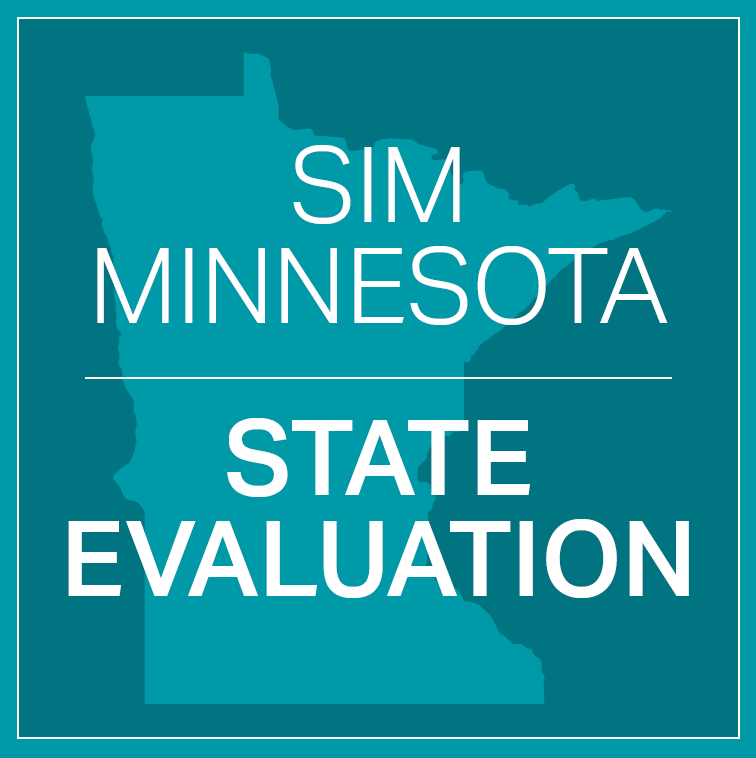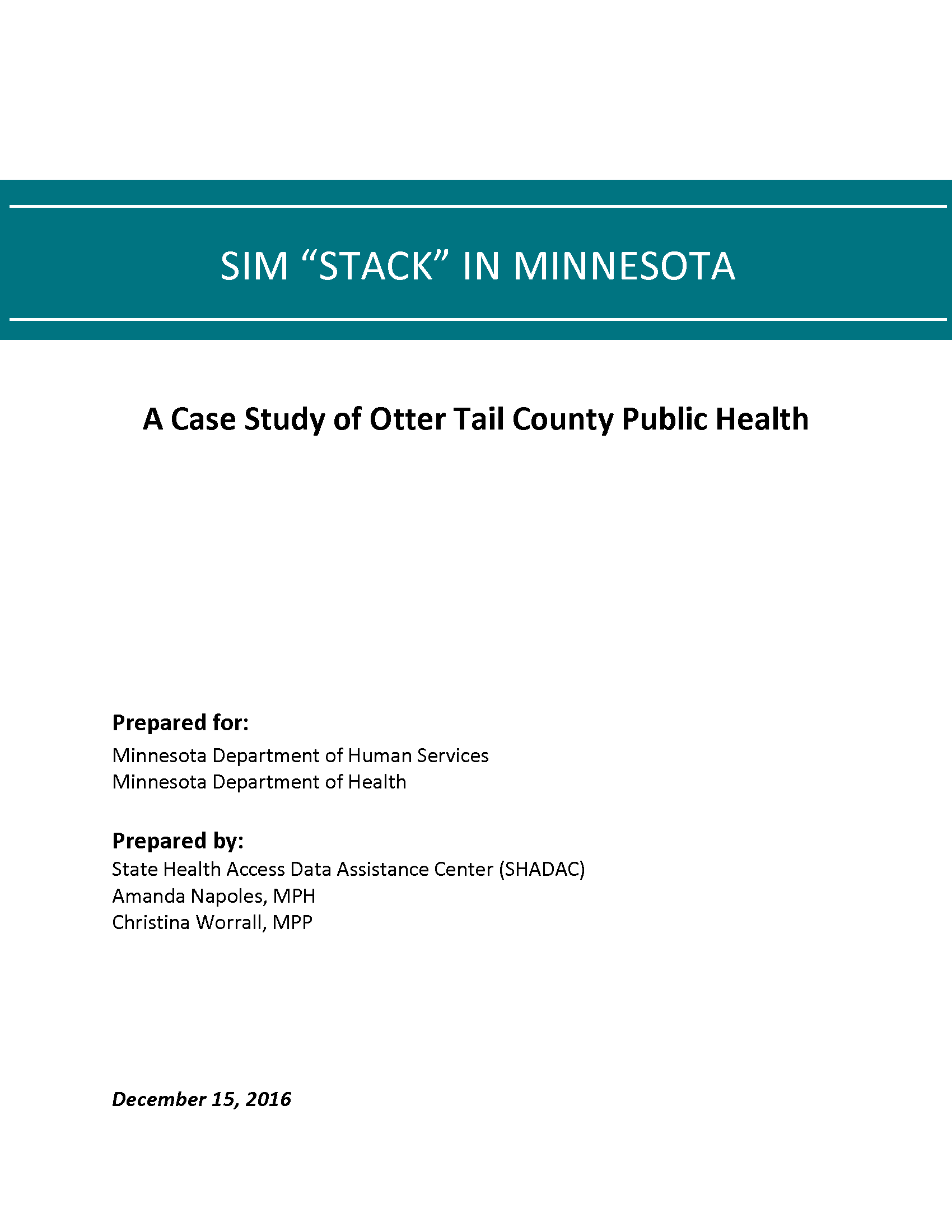Blog & News
Implementing Multiple SIM Initiatives through One Local Agency: The Effect of "Stack" in Otter Tail County, Minnesota
July 21, 2017:
Background

Driver 1. Expansion of e-Health
Driver 2. Improved data analytics across the state’s Integrated Health Partnerships (IHPs)
Driver 3. Practice transformation to achieve team-based, integrated/coordinated care
Driver 4. Implementation of Accountable Communities for Health (ACHs)
Driver 5. Alignment of Accountable Care Organization (ACO) components across payers related to performance measurement, competencies, and payment methods.
Learn more about the Minnesota Accountable Health Model.
"Stack" Case Study
 As the state’s evaluator of SIM in Minnesota, SHADAC conducted a case study of Otter Tail County Public Health (OTCPH), a local public health agency located in rural, northwest Minnesota, to investigate this agency’s experience participating in multiple SIM programs across more than one unique SIM driver, a practice known as SIM program “stacking.”
As the state’s evaluator of SIM in Minnesota, SHADAC conducted a case study of Otter Tail County Public Health (OTCPH), a local public health agency located in rural, northwest Minnesota, to investigate this agency’s experience participating in multiple SIM programs across more than one unique SIM driver, a practice known as SIM program “stacking.”
While OTCPH plays lead roles in the e-Health Collaborative Grant Program (Driver 1) and the Greater Fergus Falls ACH (Driver 4), it works collaboratively with other organizations based in Otter Tail County to implement SIM programs. For example, OTCPH was involved in the Emerging Professions (EP) Integration Grant Program (Driver 3) led by Ringdahl Emergency Medical Services (EMS). Though target populations vary somewhat for each grant program, efforts across all grant programs target individuals receiving medical assistance.
SHADAC interviews revealed that the Otter Tail community was a favorable environment in which to “stack” multiple SIM programs, owing to the community’s long history of organization collaboration, strong leadership by a single long-time leader who is widely respected, and a shared community vision of implementing a “rural health model that works.”
In order to facilitate SIM implementation in Fergus Falls, the county seat, OTCPH leveraged existing relationships, worked to keep partners aware of efforts on all work through frequent communication, and evolved its approach as partners learned about the needs of the community they were serving. For example, Ringdahl EMS had a seat at the table in the Driver 4 ACH work from the beginning of the grant period, but it was not until the Driver 3 community paramedic work was underway and ACH leadership began to see its impact on the community, that the community decided to leverage this model of community care coordination for its ACH. In spite of a supportive environment, Otter Tail County organizations faced barriers to implementation related to the administration of multiple SIM grants at the same time.
Even so, the Otter Tail community cited a number of positive impacts related to “stacking” multiple SIM grants that align with the Minnesota Accountable Health Model aims. The Otter Tail community reports that it has expanded or strengthened relationships with organizations, enhanced and streamlined care coordination, and improved community engagement by “meeting people where they’re at.” OTCPH and participating organizations have successfully leveraged their experiences on the SIM grants to obtain additional funding and all expressed a high likelihood of sustaining a community-wide effort towards delivery system and payment reform.
Find the full case study and a success story highlighting the work of Otter Tail County on the Minnesota Accountable Health Model webpage.
Learn more about SHADAC's evaluation of SIM in Minnesota.









